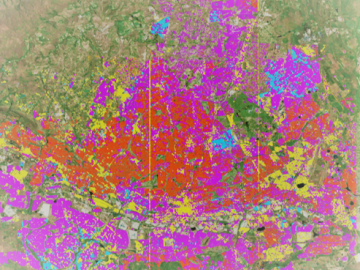Filter News
Area of Research
- (-) National Security (31)
- Advanced Manufacturing (7)
- Biological Systems (2)
- Biology and Environment (60)
- Building Technologies (2)
- Clean Energy (123)
- Climate and Environmental Systems (2)
- Computational Engineering (2)
- Computer Science (10)
- Electricity and Smart Grid (1)
- Energy Sciences (1)
- Fuel Cycle Science and Technology (1)
- Fusion and Fission (19)
- Fusion Energy (9)
- Isotope Development and Production (1)
- Isotopes (15)
- Materials (131)
- Materials Characterization (2)
- Materials Under Extremes (1)
- Neutron Science (55)
- Nuclear Science and Technology (13)
- Quantum information Science (3)
- Supercomputing (104)
- Transportation Systems (1)
News Topics
- 3-D Printing/Advanced Manufacturing (1)
- Advanced Reactors (1)
- Artificial Intelligence (7)
- Big Data (2)
- Bioenergy (1)
- Computer Science (5)
- Cybersecurity (8)
- Decarbonization (1)
- Environment (1)
- Fusion (1)
- Grid (2)
- High-Performance Computing (3)
- Machine Learning (7)
- Materials (1)
- National Security (14)
- Nuclear Energy (4)
- Partnerships (3)
- Security (3)
- Sustainable Energy (1)
- Transportation (1)
Media Contacts
The Autonomous Systems group at ORNL is in high demand as it incorporates remote sensing into projects needing a bird’s-eye perspective.

A team of researchers from ORNL has created a prototype system for detecting and geolocating damaged utility poles in the aftermath of natural disasters such as hurricanes.

Ben Thomas recalled the moment he, as a co-op student at ORNL, fell in love with computer programming. “It was like magic.” Almost five decades later, he strives to bring the same feeling to students through education and experience in fields that could benefit nuclear nonproliferation.

U2opia Technology, a consortium of technology and administrative executives with extensive experience in both industry and defense, has exclusively licensed two technologies from ORNL that offer a new method for advanced cybersecurity monitoring in real time.

A partnership of ORNL, the Tennessee Department of Economic and Community Development, the Community Reuse Organization of East Tennessee and TVA that aims to attract nuclear energy-related firms to Oak Ridge has been recognized with a state and local economic development award from the Federal Laboratory Consortium.

The word “exotic” may not spark thoughts of uranium, but Tyler Spano’s investigations of exotic phases of uranium are bringing new knowledge to the nuclear nonproliferation industry.

Oak Ridge National Laboratory will give college students the chance to practice cybersecurity skills in a real-world setting as a host of the Department of Energy’s fifth collegiate CyberForce Competition on Nov. 16. The event brings together student teams from across the country to compete at 10 of DOE’s national laboratories.

IDEMIA Identity & Security USA has licensed an advanced optical array developed at Oak Ridge National Laboratory. The portable technology can be used to help identify individuals in challenging outdoor conditions.

Scientists at the Department of Energy’s Oak Ridge National Laboratory are working to understand both the complex nature of uranium and the various oxide forms it can take during processing steps that might occur throughout the nuclear fuel cycle.

Geospatial scientists at Oak Ridge National Laboratory analyzed three cities of varying infrastructures to look for patterns of electricity use and locate “dark spots” where informal neighborhoods may lack access to power.




